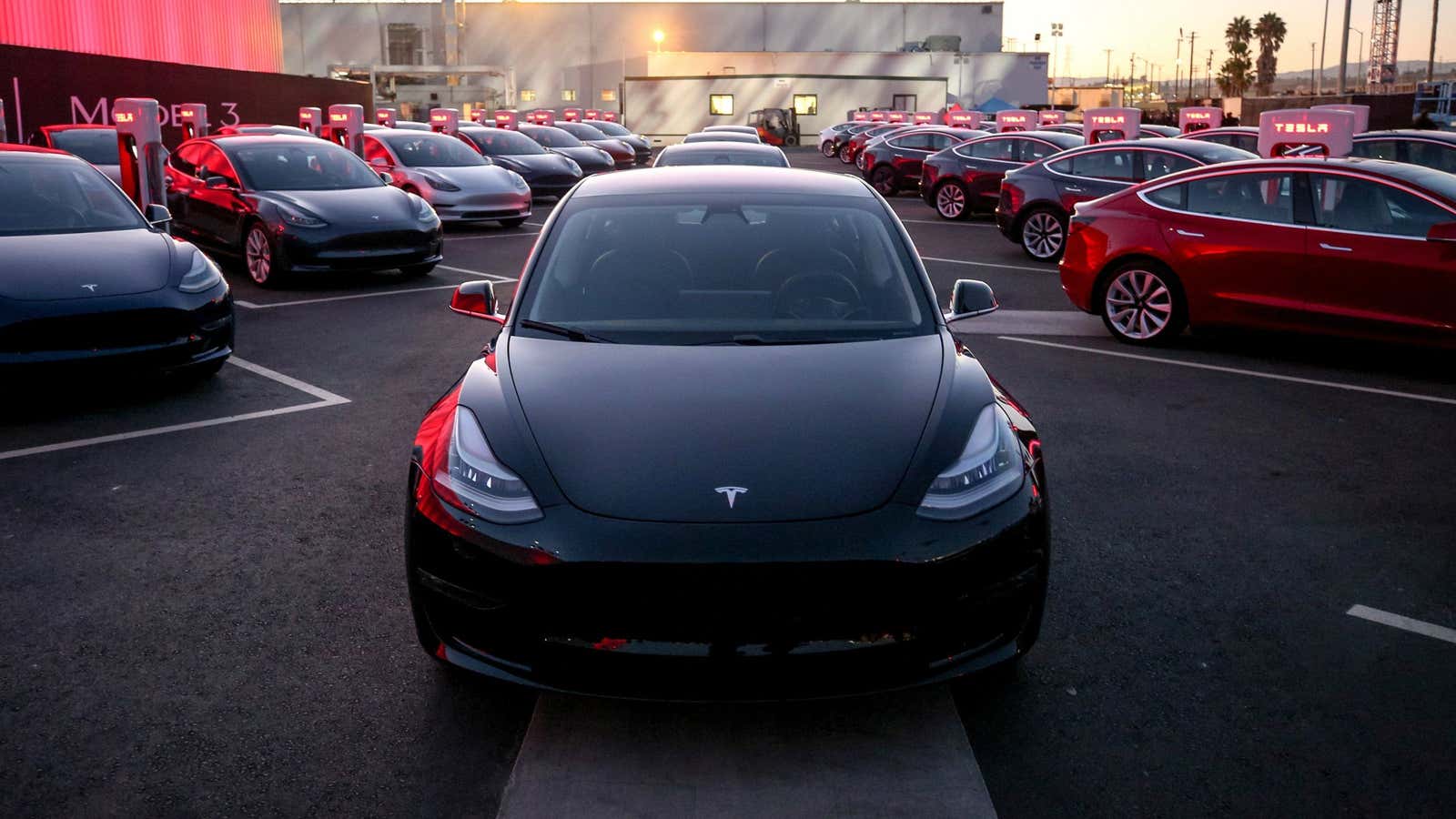Perfection, not prototyping, is usually how cars are mass-produced. Yet Tesla has rolled out its Model 3 line by making adjustments along the way, allowing it to get to market years faster, with fewer steps, than other automakers.
That has brought its own headaches.
The company had to scrap part of its assembly line last year, after struggles with automation. Today (May 22), Elon Musk said Tesla would be updating the Model 3’s braking software—and promised to fix any problems—after testers at both Consumer Reports and Car and Driver magazines found “big flaws” with the Model 3’s performance compared to comparable vehicles.
Test drivers found the distance required for the Model 3 to decelerate from 60-0 mph was 152 feet compared to an average of 131 feet with other luxury compact sedans (and 7 feet more than the stopping distance of a Ford F-150 full-sized pickup). “I’ve been testing cars for 11 years,” Car and Driver testing director K.C. Colwell told Consumer Reports, “and in 11 years, no car has stood out with inconsistent braking like this. Some trucks have…It was just weird.”
Musk typed out a round of tweets indicating the problem was likely an issue with the “anti-lock brake system calibration algorithm.”
He promised Tesla would “make sure all Model 3’s having amazing braking ability at no expense to customers” and the suspected software issues would be fixed in the coming days through a wireless update to Tesla’s vehicle firmware. He asked Consumer Reports to retest the Model 3 with a newer model with “improved ride comfort, lower wind noise & many other small improvements.”
